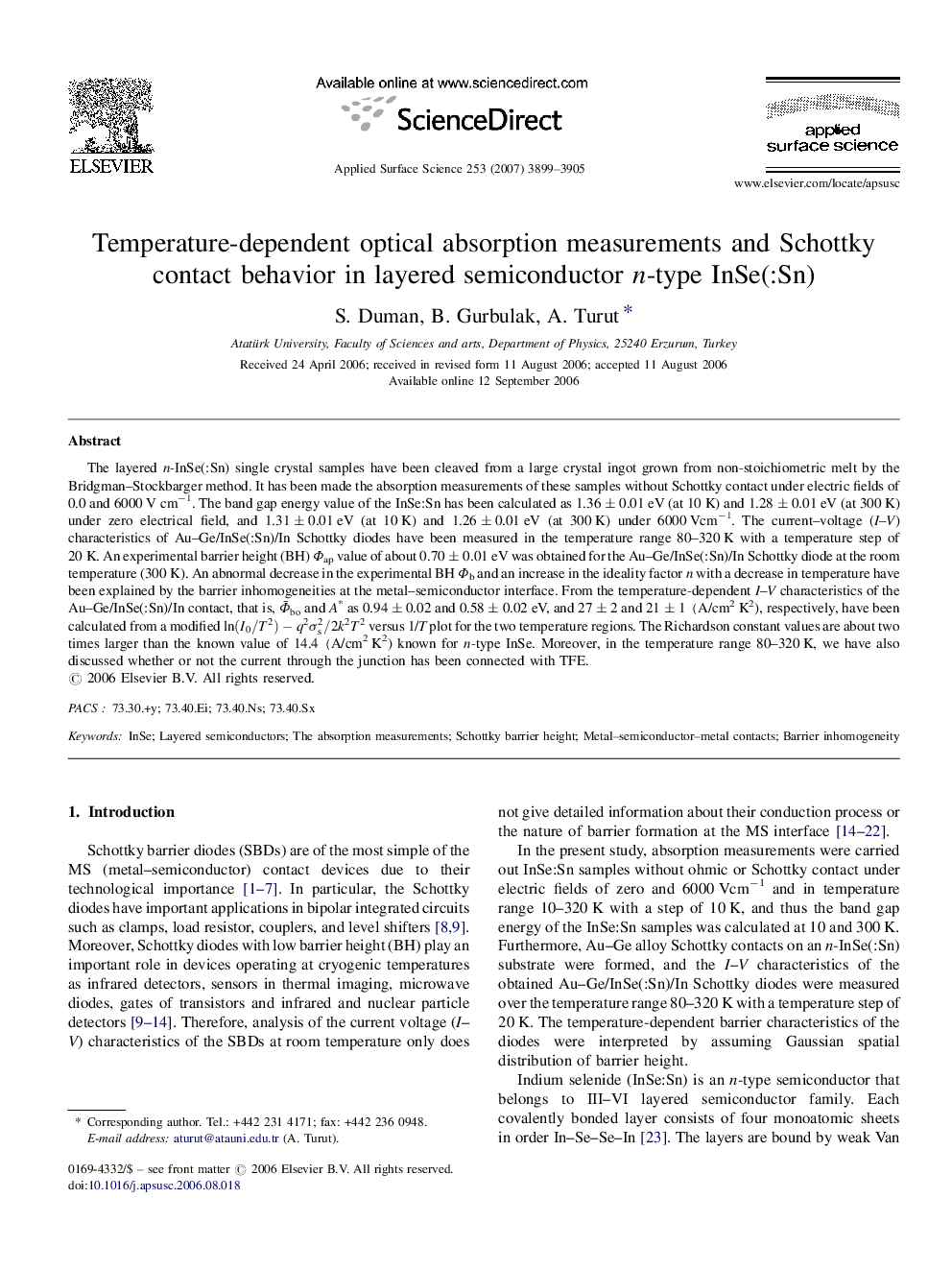| Article ID | Journal | Published Year | Pages | File Type |
|---|---|---|---|---|
| 5369858 | Applied Surface Science | 2007 | 7 Pages |
The layered n-InSe(:Sn) single crystal samples have been cleaved from a large crystal ingot grown from non-stoichiometric melt by the Bridgman-Stockbarger method. It has been made the absorption measurements of these samples without Schottky contact under electric fields of 0.0 and 6000 V cmâ1. The band gap energy value of the InSe:Sn has been calculated as 1.36 ± 0.01 eV (at 10 K) and 1.28 ± 0.01 eV (at 300 K) under zero electrical field, and 1.31 ± 0.01 eV (at 10 K) and 1.26 ± 0.01 eV (at 300 K) under 6000 Vcmâ1. The current-voltage (I-V) characteristics of Au-Ge/InSe(:Sn)/In Schottky diodes have been measured in the temperature range 80-320 K with a temperature step of 20 K. An experimental barrier height (BH) Φap value of about 0.70 ± 0.01 eV was obtained for the Au-Ge/InSe(:Sn)/In Schottky diode at the room temperature (300 K). An abnormal decrease in the experimental BH Φb and an increase in the ideality factor n with a decrease in temperature have been explained by the barrier inhomogeneities at the metal-semiconductor interface. From the temperature-dependent I-V characteristics of the Au-Ge/InSe(:Sn)/In contact, that is, Φ¯bo and A* as 0.94 ± 0.02 and 0.58 ± 0.02 eV, and 27 ± 2 and 21 ± 1 (A/cm2 K2), respectively, have been calculated from a modified ln(I0/T2)âq2Ïs2/2k2T2 versus 1/T plot for the two temperature regions. The Richardson constant values are about two times larger than the known value of 14.4 (A/cm2 K2) known for n-type InSe. Moreover, in the temperature range 80-320 K, we have also discussed whether or not the current through the junction has been connected with TFE.
